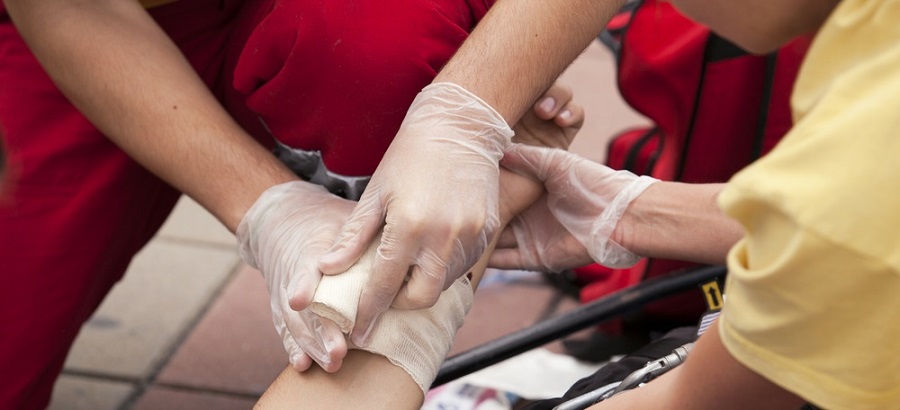
Most of us are familiar with the first step in the DRSABCD emergency action plan: Danger. We know to check the area surrounding a casualty to make sure it’s safe for ourselves, the injured person and others in the area. However, another ‘danger’ that is often overlooked in these situations is the risk of infection through treating a casualty.
Although the risk of cross infection is low, it is important to adopt protection barriers between you and the casualty’s body fluids to prevent transmission of these diseases. You should assume that anyone can be a carrier of an infectious disease such as HIV, hepatitis or meningitis, and approach all situations involving body fluids (saliva, vomit, blood, urine, faeces etc.) as potentially infectious.
Fluids can enter your bloodstream through cuts or cracks in the skin, or through the mouth and eyes. Sneezing or coughing from the casualty could spray contagious substances onto you. Examples of recommended first aid barriers are resuscitation masks, gloves, and eye or face shields. Additional washing before and after giving first aid is important and offers additional protection.
Before Treatment
Always wear gloves if available and take care not to touch any unclean object after putting on gloves or after your hands are washed.
- Wash hands with soap and water, or rinse with antiseptic
- Ensure you wash thoroughly between fingers and under fingernails
- If possible, use a protective cover over your clothing
- Cover any adjacent areas likely to produce infection
During Treatment
- Avoid contact with body fluids
- Avoid coughing, breathing, or speaking over the wound
- If treating more than one casualty, change gloves between each casualty
- Use a face shield or mask with a one-way valve, if available, when doing active resuscitation
- Only use clean bandages and dressings
After Treatment
- Dispose of gloves and wash hands thoroughly with soap and water
- Clean up the casualty and yourself
- Clean the immediate vicinity
In the event of contact with blood or body fluid: